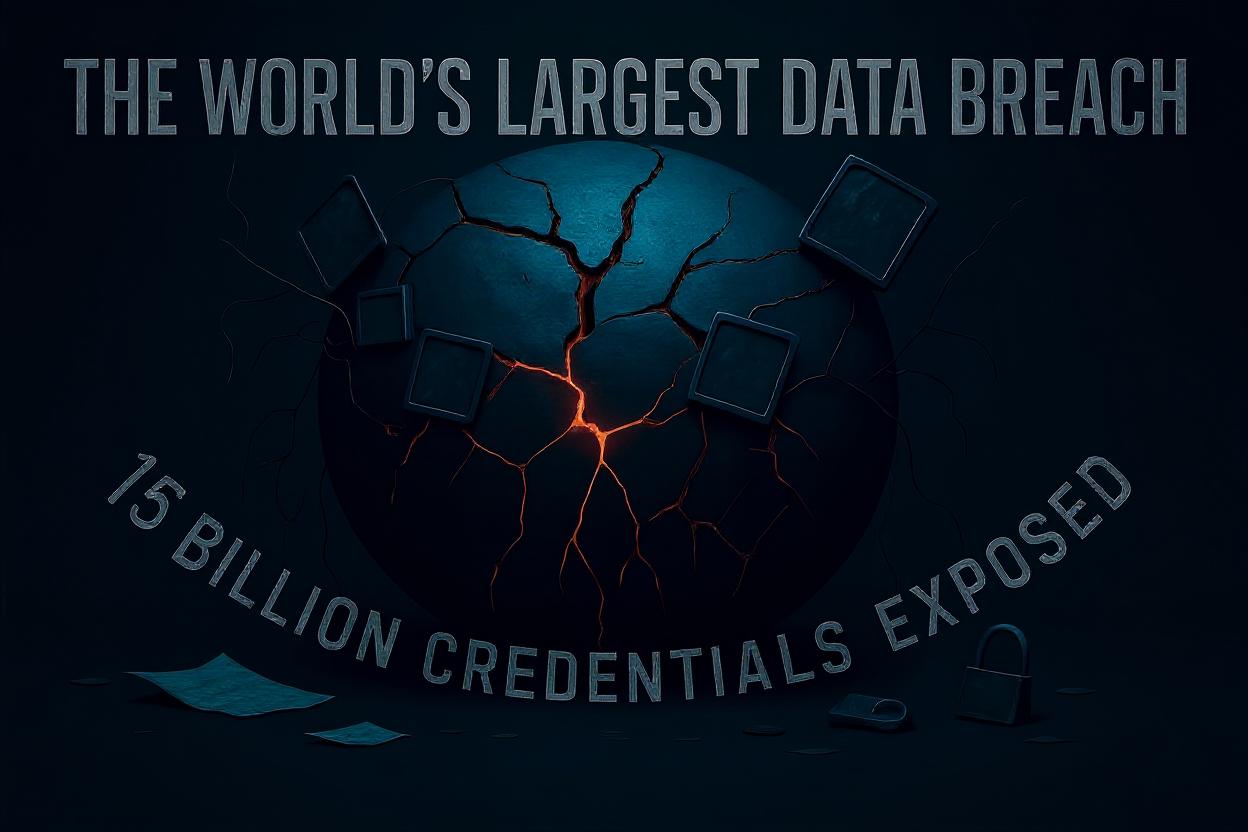A record-shattering data breach has rocked the digital world, with researchers revealing that more than 16 billion login credentials have been leaked in what is believed to be the largest collection of exposed passwords and usernames ever discovered. This unprecedented incident, uncovered by cybersecurity researchers at Cybernews, highlights the growing threat posed by infostealer malware and the vast, often invisible, underground economy of stolen data.

What Happened?
The breach is not the result of a single hack but rather the aggregation of 30 massive datasets, each containing anywhere from tens of millions to over 3.5 billion records. These databases were briefly accessible online through unsecured storage and Elasticsearch instances, long enough for researchers to find them but not enough to identify those responsible.
The exposed credentials span almost every major online service imaginable, including Apple, Google, Facebook, Instagram, Gmail, GitHub, Telegram, VPNs, and even government portals. Each record typically contains a website URL, a username, and a password—mirroring the data structure collected by infostealer malware.
Where Did the Data Come From?
Researchers believe the majority of the leaked information comes from infostealer malware—malicious software that infects devices and harvests sensitive data such as login details, cookies, and tokens. Some of the data also appears to be a mix of credential stuffing sets (where hackers use previously leaked credentials to try to break into new accounts) and repackaged leaks from older breaches.
Crucially, experts note that this is not just a recycling of old breaches: the datasets contain fresh, weaponisable data, with recent logs and metadata that make them especially dangerous for both individuals and organisations.
How Bad Is the Impact?
The sheer scale of the breach is staggering. With approximately 5.5 billion people online globally, the leak could potentially affect multiple accounts per person. The exposed credentials provide cybercriminals with a "blueprint for mass exploitation," enabling account takeovers, identity theft, and highly targeted phishing attacks.
However, it is impossible to determine exactly how many unique individuals or accounts have been exposed, as there is likely significant overlap between datasets. Some reports suggesting that accounts at companies like Facebook, Google, and Apple were directly breached are misleading; instead, the credentials are for accounts on these platforms, harvested from various sources rather than from a central hack of those companies.
What Should Individuals and Organisations Do?
Security experts are urging immediate action:
- Change your passwords on all online accounts, especially if you reuse passwords across services.
- Enable multi-factor authentication (MFA) wherever possible to add an extra layer of protection.
- Use a password manager to generate and store unique, strong passwords for every account.
- Check if your credentials have been compromised using services like "Have I Been Pwned".
- Stay vigilant for phishing attempts and suspicious account activity.
For organisations, the breach underscores the need for robust credential monitoring, endpoint security, regular credential audits, and ongoing employee training to recognise phishing and malware threats.
The Bigger Picture
While the 16 billion credentials leak is not a single catastrophic hack, its scale and recency make it a wake-up call for the digital age. The prevalence of infostealer malware and the frequency with which new, massive datasets emerge highlight the urgent need for stronger cybersecurity practices and greater awareness among both individuals and organisations.
As one expert put it, "This is not just a leak—it's a blueprint for mass exploitation". The digital world has never been more interconnected—or more vulnerable.
Key Takeaways:
- Over 16 billion credentials leaked from 30 datasets, affecting nearly every major online service.
- Data primarily harvested by infostealer malware, not from a single company breach.
- Immediate password changes, MFA, and vigilance are critical for protection.
- The breach is a stark reminder of the ongoing, evolving threat landscape in cybersecurity.
